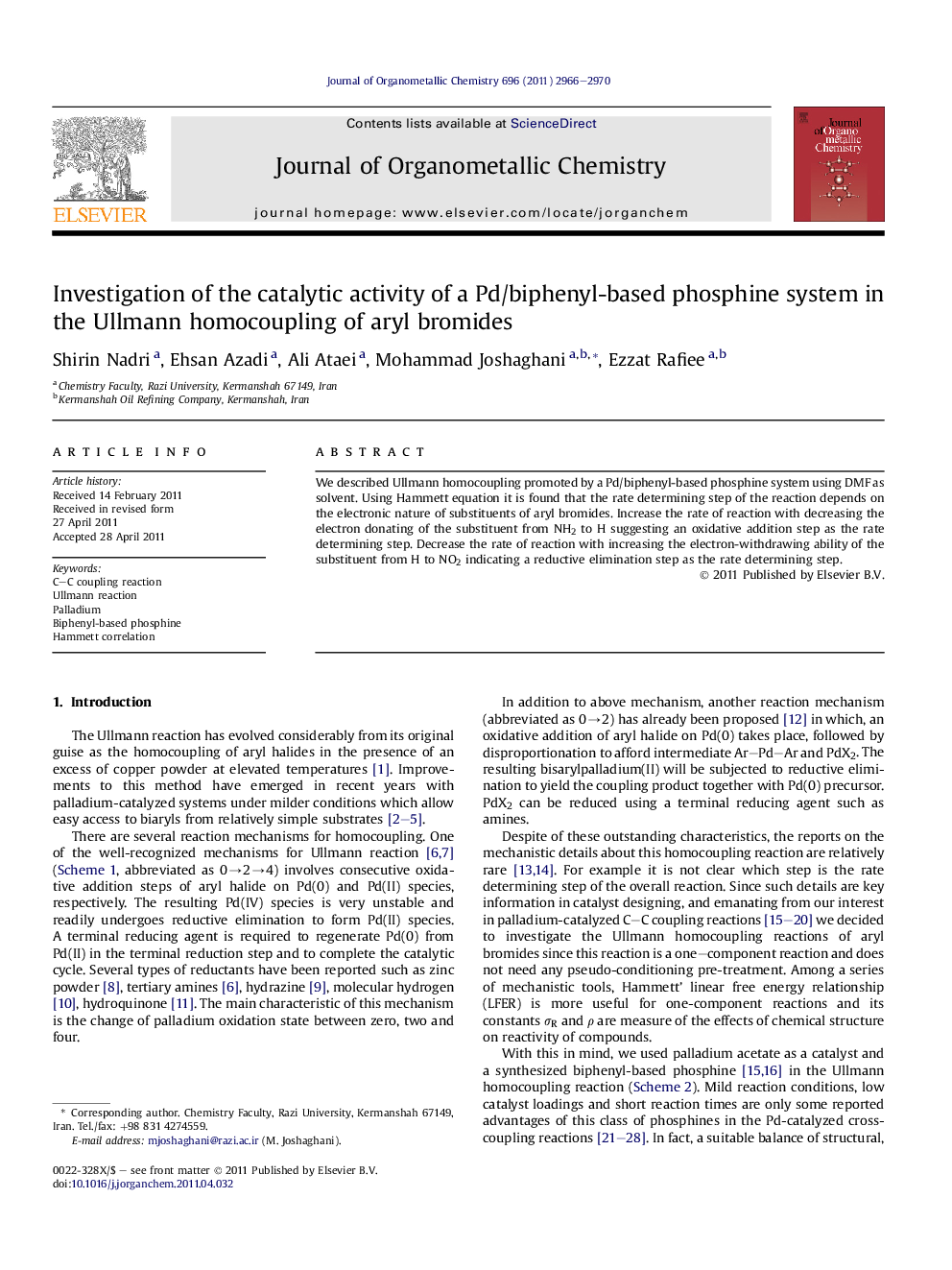| Article ID | Journal | Published Year | Pages | File Type |
|---|---|---|---|---|
| 1323872 | Journal of Organometallic Chemistry | 2011 | 5 Pages |
We described Ullmann homocoupling promoted by a Pd/biphenyl-based phosphine system using DMF as solvent. Using Hammett equation it is found that the rate determining step of the reaction depends on the electronic nature of substituents of aryl bromides. Increase the rate of reaction with decreasing the electron donating of the substituent from NH2 to H suggesting an oxidative addition step as the rate determining step. Decrease the rate of reaction with increasing the electron-withdrawing ability of the substituent from H to NO2 indicating a reductive elimination step as the rate determining step.
Graphical abstractThe biphenyl-based phosphine (2-diphenylphosphino-2′-methylbiphenyl) has been used to the palladium-catalyzed Ullmann homocoupling of aryl bromides.Figure optionsDownload full-size imageDownload as PowerPoint slideHighlights► Application of a biphenyl-based phosphine in Pd-catalyzed Ullmann reaction. ► Use of Hammett equation for the determination of the rate determining. ► NEt3 acts as a terminal reducing agent.
